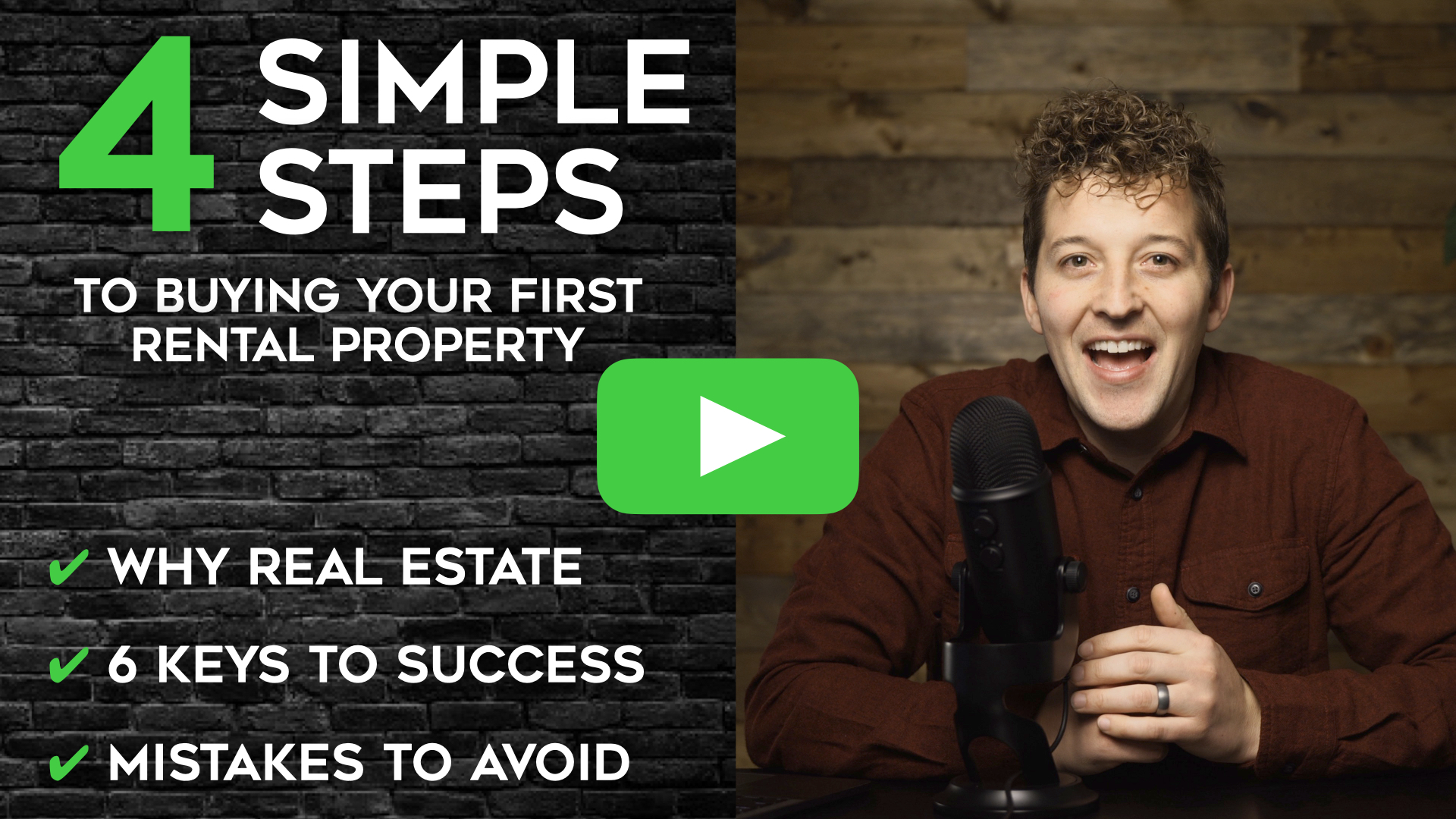When you buy a rental property, you typically want to use as little of your own money as possible. But real estate is expensive, so if you’re not using your money, where does the money come from? It’s called OPM, other people’s money!
One of the best parts about investing in real estate is that you can use leverage to amplify your rate of return. Whether you call it leverage, OPM, or a loan, it’s all the same, and it’s the secret sauce to getting massive returns with real estate investing.
Most of the time using OPM will mean getting a mortgage from a bank to cover the majority of the purchase price, but you could also use a private lender, hard money, seller financing, or a business partner to provide the funds, sometimes you’ll use a couple different sources. If any of those words went over your head that is okay. That’s exactly what this post is all about. I’m going to lay out all of the most common ways to get funding to purchase your rental property. I’ll follow this post up with another one that outlines all the pros and cons of each one and when they might be effective to use.
There is only one word I need you to know before we dive into these financing strategies, and that’s “Conventional loan”. A conventional loan is the loan type you’re probably most familiar with. Pretty much everyone gets a conventional loan to buy a house. Conventional loans meet certain government-regulated guidelines that basically guarantees the banks will be protected.
We’ll cover this in more depth when we talk about conventional loans, but just know that conventional loans, because they’re government regulated, typically have the lowest up front fees and also the lowest interest rates. As we go over all the different financing options, I compare pretty much all of them to conventional loans, so just know when I say conventional loan, I mean the standard, default, most common, cheapest, basic, vanilla loan that pretty much everyone gets. So, let’s go for it.
Full Cash
The first way to buy a property is with cash. This means NOT using OPM, you just fund it all yourself. If the house costs $100,000, you just fork it up and buy it outright with no loans or financing of any kind.
Commercial Loan
A commercial loan is a loan you get from a bank for a commercial property. Commercial properties are things like office space, retail locations, or residential properties with 5 or more units like a large apartment complex. If you’re trying to buy something like this, you don’t really have any other options besides getting a commercial loan.
DSCR Loan
DSCR loans or Debt Service Coverage Ratio loans take some aspects from commercial loans and combine them with aspects from conventional loans, almost like a hybrid.
The way these loans work is revealed in the title. Debt Service Coverage Ratio. Debt Service is the monthly mortgage payment you will have to make to repay the loan. Coverage Ratio refers to how much income the property will bring in to cover that debt service or monthly loan payment. A DSCR loan might require a coverage ratio of 1.2 which means if your debt service or monthly loan payment is $1,000 a month, they’ll approve the loan as long as the property will bring in at least $1,200. $1,200 of rent to cover a $1,000 payment is a Debt Service coverage ratio of 1.2.
Conventional Loans: Conforming
We finally made it, conventional loans. When we say Conventional Loan, that actually covers a broad array of different loans, but they all have 3 things in common.
First, they are made to individuals not business entities, and they are approved based on the merits of that individual.
Second, They are for residential properties, not commercial properties.
Third, they are not government backed or government insured. We’ll talk about a few government backed loans later, but conventional loans are NOT government backed.
While conventional loans are not government backed they might be government REGULATED. This is where we branch off into two very different loans. On the one hand we have conventional conforming loans and on the other we have conventional non-conforming loans.
Conforming means the loan conforms with or meets certain government regulations or guidelines. Non-conforming loans don’t meet these guidelines. Conventional loans are given out by private institutions like banks or credit unions so they can do whatever they want, but if the loan conforms to certain government regulations, there are perks for the lender that make the loan less risky.
These government guidelines are created by government sponsored agencies Fannie Mae And Freddie Mac. They dictate things about the loan itself like the maximum loan amount and the maximum loan to value or LTV ratio. They also dictate things about the borrower like the minimum debt to income ratio or DTI and the minimum credit score.
When loans meet these guidelines set by Fannie Mae and Freddie Mac, it guarantees that the loan can be sold to a government sponsored enterprise like Fannie Mae or Freddie Mac. Banks like this because they have liquidy requirements, and if they ever have too much money tied up in loans, they want the peace of mind of knowing they can easily trade that loan for cash to be in compliance.
These conforming loans are really the standard, default, most common, cheapest, basic loans that pretty much everyone gets. If someone talks about getting a conventional loan, they’re almost always talking about a conventional conforming loan. If they were talking about a conventional non-conforming loan, they’ll usually just refer to it as a non-conforming loan.
Non-conforming loans can also be referred to as QM and non-QM. QM means qualified mortgage, or in other words, the mortgage qualifies for the purchase guarantee from Fannie Mae or Freddie Mac. Non-QM loans obviously don’t qualify because they don’t meet the regulations. So QM is the same as Conventional Conforming loans, and Non-QM is the same as Conventional Non-Conforming loans.
So just to recap, conventional loans, or more accurately called conventional conforming loans are loans that are made by private institutions like banks or credit unions to individuals for residential properties and follow the guidelines set by Fannie Mae and Freddie mac. This makes them safer for banks, which makes them cheaper for you.
Non-Conforming Loans, or more accurately called conventional non-conforming loans are loans made by the same banks for the same types of properties, but they ignore the safety nets of the guidelines set by Fannie Mae and Freddie Mac. This makes the loan a little more risky for the bank, so in turn they’ll probably charge you a little more money for them.
Conventional Loans: Non-Conforming
By ignoring the guidelines set by Fannie Mae and Freddie Mac, private institutions like banks or credit unions can offer really unique and attractive loan programs.
For example, one of the guidelines set by Fannie Mae and Freddie Mac is a maximum loan amount. These maximum loan amounts go up every year or so, and have larger limits for a 4-plex than they do for a duplex or single family home. The limits are higher in some cities than others to adjust for the local cost of housing. They are flexible enough to work for most people and most situations, but what if you’re buying a super expensive property?
We both live in Utah, and the conforming loan limit for a single family home in Utah County is $510,400. That means if you’re trying to buy a million dollar house for yourself or to rent out on airbnb you’d either have to come up with half a million dollars for a down payment which is basically a 50% down payment since conforming loans will not lend you more than $510,000, or you can get a Jumbo loan. A jumbo loan is one type of non-conforming loan. It doesn’t follow the government set guidelines, but banks make money by lending money, and by offering jumbo loans, they can make a bunch of money. It’s not as safe for the bank because it can’t be purchased by Fannie Mae or Freddie Mac if the bank ever needed to be more liquid, but the bank can still choose to ignore the guidelines and offer jumbo loans. And tons of banks do.
If you do get a jumbo loan, you’ll probably pay a few thousand dollars extra in closing costs and have a higher interest rate.
Another guideline set by the government is the maximum LTV or loan to value for certain types of purchases. Loan to value is the opposite side of your down payment. If you do 25% down, that means the bank is paying 75%, or in other words 75% loan to value. The LTV requirements change from time to time, but typically if you’re buying an investment property, a 15-25% downpayment is required for conventional loans, and if you’re ever below 20% down, you have to pay for an insurance policy called PMI or private mortgage insurance that insures the bank if your stop making your loan payments.
Here in Utah, there is a local credit union called Mountain America Credit Union that decided to ignore the Fannie Mae and Freddie Mac guidelines and offer a 10% down investment property loan without PMI or private mortgage insurance. This loan is awesome and we’ve used it to purchase 4 rental properties. A smaller down payment means more leverage which means more amplification. Plus we can afford to buy properties faster since it takes less than half as much money. However, because they choose to ignore the guidelines, it makes it riskier for Mountain America Credit Union, to compensate for the added risk, they add extra costs to the loan and we end up paying about $10,000-$15,000 extra in loan costs per loan than we would with a conventional loan. In our situation, the added cost is worth it because this loan allows us to scale a lot faster. That’s another example of a non-conforming loans.
Another guideline with conventional loans is that a single individual can only have 10 conventional mortgages in their name at a time, so if you’ve maxed that out, non-conforming loans might be your only option.
DSCR loans like we talked about earlier are actually a type of non-conforming loan. But they’re popular enough that they deserved their own section.
With non-conforming loans, you can also find longer terms, like a 40 year mortgage which will keep your monthly payment smaller.
Because non-QM or non-conforming loans don’t follow government set guidelines, they can come in all shapes and sizes. Unfortunately there’s no way to know all of the specifics of every non-conforming loan available in every area, but our trusted agents and their recommended lenders should know of the best investor friendly non-conforming loan programs in their area!
Non-conforming loans might be a good fit for you if you already have 10 conventional loans and can’t get any more of the cheapest loans. It also might be a good fit if there are really attractive options available in your area that allow you to get started with smaller down payments than a conventional loan would allow like the 10% Down Mountain America Credit Union Loan we’ve used. We’ve also had students in Arkansas find 0% down for a first time owner occupied home purchase. When you’re looking at loans, just be sure to take the whole loan program with all its terms and fees into consideration.
If you think a non-conforming loan might be a good fit for you, be sure to ask your agent about it. Between your agent and their network, if there are good options out there, they should know about it. You could also call a few smaller credit unions and ask them if they offer any unique loan program for real estate investors. Not every area has attractive non-conforming loan options, but depending on your situation it might be worth asking around.
There are other options for funding your real estate investment, but we’ll go over those in another post.
You real estate coaches,
Dallas & Greg




